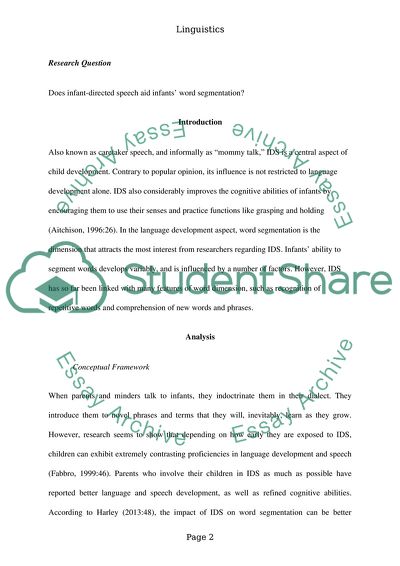Cite this document
(“Relationship between Infant-Directed Speech and Word Segmentation Research Paper - 1”, n.d.)
Retrieved from https://studentshare.org/humanitarian/1677178-research-essay
Retrieved from https://studentshare.org/humanitarian/1677178-research-essay
(Relationship Between Infant-Directed Speech and Word Segmentation Research Paper - 1)
https://studentshare.org/humanitarian/1677178-research-essay.
https://studentshare.org/humanitarian/1677178-research-essay.
“Relationship Between Infant-Directed Speech and Word Segmentation Research Paper - 1”, n.d. https://studentshare.org/humanitarian/1677178-research-essay.


